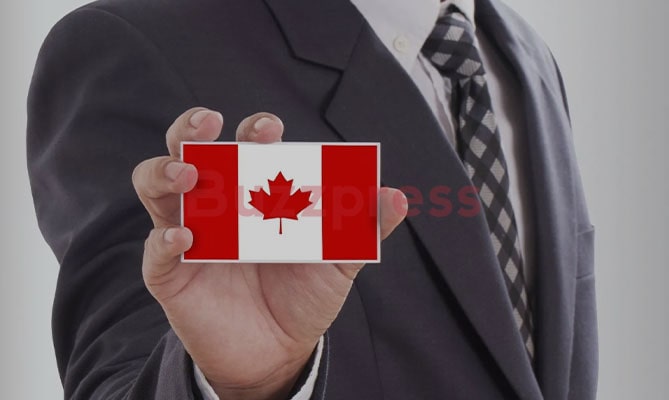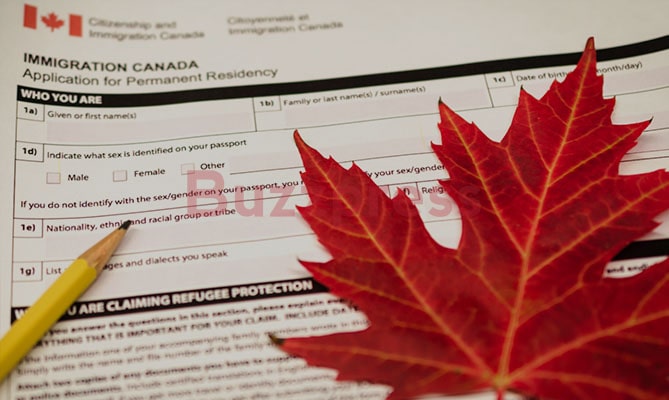How much does it cost of living in Canada

The cost of living can vary greatly from one Canadian city to another. The most significant variable is housing (i.e., rent or mortgage payments), which is the biggest monthly expense you will have.
1. Renting or Buying a Home
Typical rent for a bachelor apartment can go from $700 to $2,000 in a big city and from $500 to $800 in a small town, depending on the location and living conditions. Many apartment complexes include utilities such as water and heat in the price of the rent, while electricity, cable, and phone bills are your responsibility. An average electricity cost would be around $80 per month.
Most rental apartment buildings require a lease for a minimum of six months and a security deposit, which is normally half the monthly rent. Also, they often do not take cash or credit. You can pay with a cheque, debit card, or money order.
Downtown rents tend to be more expensive due to the convenient central location. Outlying areas often have more affordable rents and better living standards (e.g., bigger apartments, more parks and playgrounds, and inexpensive shopping venues), but longer commutes into the city.
In addition to a typical apartment rental, you may also be able to rent a private suite in a house, a whole house, townhome, or a room in a house with a shared kitchen and bathroom. These rentals are typically offered by individual owners, rather than management companies, who handle most apartment complex rentals. There may be more flexibility if you rent from an individual, but you still have all the same tenant rights and responsibilities as any other renter. Each province and territory has its own tenancy rules and guidelines, which can be found on housing ministry websites.
If you decide to buy a house, things are more complicated and more expensive. Housing prices in Canada vary across the country, with the most expensive homes found in Greater Vancouver, followed by other big cities such as Toronto. The least expensive housing is found in the Prairies and northern parts of the country.
Most Canadians get a mortgage loan from a bank, which requires a substantial down payment.
Even with a down payment, in order to obtain a loan, you first need to establish a credit rating (which proves to the bank that you are able to pay back the loan). In most cases, immigrants have to wait a few years before they establish a good credit rating in Canada and can access a mortgage loan.
Other expenses related to owning a house are property tax and household insurance.
2. Food
On average, Canadians spend between $200 and $300 per person each month on groceries. Supermarkets have sales on various items all the time, and you will probably receive many flyers and coupons in your mailbox.
Farmers’ markets are not very common in Canada, but a great variety of fresh fruits and vegetables are available year-round. Seasonal produce will cost less and have a better flavor so take advantage of it while it lasts. Organic foods tend to be significantly more expensive and are usually sold in specialty stores or in special aisles at regular stores. In a big city, it is very likely that you will find at least one store or restaurant that caters to your ethnic community.
Dining out will definitely increase your food bill. Take some time to know your city before you start sampling the local restaurants. Big Canadian cities have countless eating establishments, from fast-food chains to fine dining, which can be very tempting, but it is a good idea to save restaurant outings for special occasions as they can get pricey and often are full of high-calorie, high-fat options.
3. Tipping
In Canada, it is customary to tip 15 to 25 percent on the bill for a variety of services. You do not have to do it, but the social pressure exists, and most people do tip. You may want to budget for it.
Professional categories that usually receive tips include waiters, bartenders, hotel valets, room attendants, manicurists, hairdressers, beauticians, cab drivers, parking valets, bellhops, and porters.
It is not customary to tip retail associates or clerks, and you should never attempt to tip doctors, nurses, police, or people who work in public institutions. If you want to express your gratitude toward medical staff or public institution staff, you can simply send a “thank you” card.
4. Clothing
Your clothing expenses will depend greatly on your personal taste and standards. Still, you should know that Canadians tend to favor casual styles and do not tend to judge people by the labels they wear or by the value of their attire.
If saving money is your number one priority, you can definitely find clothing items for less than $10 and footwear for less than $30, especially in the discount bins at some stores. Avoid trendy shopping locations, and hunt for clearance sales as much as possible. You may also want to give thrift stores (i.e., secondhand stores) a chance.
If you have many valuable clothes and accessories (e.g., designer items) at home in your country of origin that will not fit into your luggage, it would be a good idea to pack them and have your family or friends ship them to you later. You don’t know how long it will be until you can afford to do high-end shopping again, so why not make the most of what you already own?
Since you will be job hunting, you should know that the standard interview style in Canada is smart-casual (e.g., dres’s pants or skirt, and a buttoned shirt or a simple blouse, and blazer). Very few employers expect you to come to the interview in an elegant three-piece suit. Bring with you the things you will need the most, and save the elegant outfits for later.
5. Furniture
As with clothes, prices on furniture differ greatly from store to store. Beds and couches are particularly expensive so it may not be possible for you to buy new ones as soon as you get here. You can find used furniture at great prices at garage sales and thrift stores, or on websites such as Craigslist or Kijiji. Also, check the laundry room in your apartment building as soon as you move in: Often, people who move out want to get rid of some furniture and post ads for the other tenants.
Another option is to contact your local immigrant community center or church to see if they have any available donations.
Obviously, finding suitable furniture takes a bit of time, you will not be able to get it all as soon as you move into your home. Many immigrants choose to sleep on inflatable mattresses (which cost between $30 and $150) for a short while until they learn what their options are.
6. Appliances and Electronics
If you bring appliances and/or electronics from your country of origin, you may need to buy some adapters. Note that Canada uses 110 volts.
You can find basic appliances at very good prices. Some big stores carry small household appliances for less than $20 (e.g., toasters, mixers, blenders, coffeemakers, hairdryers, clothes irons), and larger ones for less than $70 (e.g., microwaves, vacuum cleaners).
Plasma or flat-screen television sets can cost anywhere from $200 to more than $2,000, depending on the size and brand. Classic television sets cost considerably less.
Laptops and desktop computers for average use can be quite expensive (from $500 to $1,300), but, if possible, it would be best to invest in one. Your job search will be highly dependent on the Internet, and you will also need it to find useful information fast (e.g., maps, routes, phone numbers, and services) and to keep in touch with your loved ones at home. By using Skype on your computer you can save hundreds of dollars on long-distance bills!
Multifunctional printers for home use can cost from $60 to more than $200. Employment centers usually offer free printing services to their clients (including basic business cards), and you will definitely have to print many résumés. Paying for copying, scanning, and printing is expensive so take advantage of any free services you can get, or buy your own printer.
When you buy electronics, dealers will try to sell you an extended warranty plan (for one or two years). The cost of this plan is usually 10 percent of the item cost. It is up to you to decide if you want it or not, but remember that each item has a manufacturer warranty that is included in the price. The advantage of the extended warranty plan is that you can take your item back to the store in case it breaks (instead of sending it to the manufacturer), and the store will fix it or give you a new one. The disadvantage is that you may not need it at all (e.g., few computers break in less than a year), or if you believe in “Murphy’s Law,” your item can break the day after your warranty expires. Savvy shoppers usually consider extended warranties to be unnecessary.
You will, most likely, have to purchase a Canadian cell phone. Some Canadian cell phones have SIM cards, some do not. Most cell phone carriers offer some phones for free or at a considerable discount if you sign up for a two- or three-year plan. If you find their offers confusing, you could simply buy a less expensive cell phone and prepaid airtime until you feel confident enough to commit to a contract. A cell phone plan costs around $40 per month, but you can also buy prepaid credit for as little as $10. You can choose the plan that is best for your needs. You can purchase inexpensive long-distance phone plans from specialized companies to make it easier to keep in touch with your loved ones at home.
Phone and Internet costs are, on average, $40 a month. Employment centers usually provide free Internet access, but it is a good idea to get your home connection because you will use the Internet extensively in your job search.
Basic cable costs around $30 to $40. For specialty channels, you will have to pay extra.
7. Transportation
Public transit is very good in most Canadian cities. Vancouver, Toronto, Calgary, Edmonton, Montreal, and Ottawa have rapid transit train systems.
During your first months in Canada, you will have to travel a lot so it would be best to purchase a monthly bus pass and not worry about always having exact change for a bus ticket. A monthly bus pass can cost between $70 and $150 depending on the areas it covers. An individual ticket can cost between $2.50 and $3.75. Transit companies offer discounts for children, students, and seniors 65 years or older.
Some newcomers decide to buy a vehicle, especially if they have small children. The law states that all vehicles must be insured so you must also take into account the insurance costs. Gas costs range from $1.15 to $1.50 per litre. If you are confident in your technical knowledge, you can buy a used vehicle directly from the vendor or through a used vehicle dealership.
Renting a car is expensive and it is best to save that for special situations. If you choose to rent, you are looking at a minimum of $900 per month.
Taxi services in Canada charge between $1 and $2 per kilometer, with a starting price of at least $3.
8. Health Care
As mentioned in the previous chapter, newcomers have to wait three months before they can get health insurance in several provinces. If you wish to be covered during these initial three months, you need to purchase insurance from a private company.
Once you’re eligible for public health care, you may be faced with paying a monthly premium, depending on your province or territory. The costs of these public healthcare premiums depend on the area you choose and the size of your family.
Dental care is very expensive in Canada. Dental insurance plans can be purchased from private companies and some employers offer dental plans to their employees. It is not covered by Canada’s public healthcare system. Other areas that are not covered in full or in part include optometry, chiropractic, physiotherapy, and psychological counseling.
9. Entertainment
The price of a ticket for a show, festival, concert, or sports match depends on the type of event and the seating, going from less than $10 to hundreds of dollars. Movie tickets cost between $7 to $15. Local libraries lend DVDs and CDs at no cost, and there are also many community theatres that provide free performances.
10. Other Expenses
Alcohol and cigarettes are expensive because the taxes on such items are very high. It is illegal to order cigarettes from other countries.
Postage within Canada, for a simple letter, is $0.85. International postage costs $2.50. Every January, stamp prices slightly increase. International parcels can be quite expensive depending on the size and mailing option.
The monthly cost of personal care and cleaning supplies should not be more than $30 per person, but this also depends on your personal preferences. Supermarkets have store brands of acceptable quality (many are just as good as big brand products), and there are also dollar stores where you can find a myriad of small household and personal-care items.
A simple haircut costs around $25 to $30 for men and somewhat higher for women.
Apartment buildings usually have laundry rooms, and you will be charged for each wash from $2.50 to $4. You can use coins or a laundry card that you will get from the building receptionist and that you can charge from your debit or credit card.
11. Taxes
When you get a job, the money deducted from your paycheque will be around 25 to 35 percent. This money is used to pay for things such as Employment Insurance (EI), pension plans, income taxes, and union dues (if applicable). The percentage may be higher than what you are accustomed to, but remember that Canadians enjoy a higher living standard, and such a standard needs to be supported by taxpayers.
Most goods and services you buy also have added sales taxes. These are the Goods and Services Tax (GST) and Provincial Sales Tax (PST). The GST is 5 percent, and the PST is between 7 and 10 percent, depending on the province.
Ontario, Newfoundland and Labrador, and Nova Scotia have a Harmonized Sales Tax (HST), which means they combine the GST and PST into one tax. BC has transitioned back from a recent change to HST.
Yukon, Northwest Territories, Nunavut, and Alberta do not have a Provincial Sales Tax.



